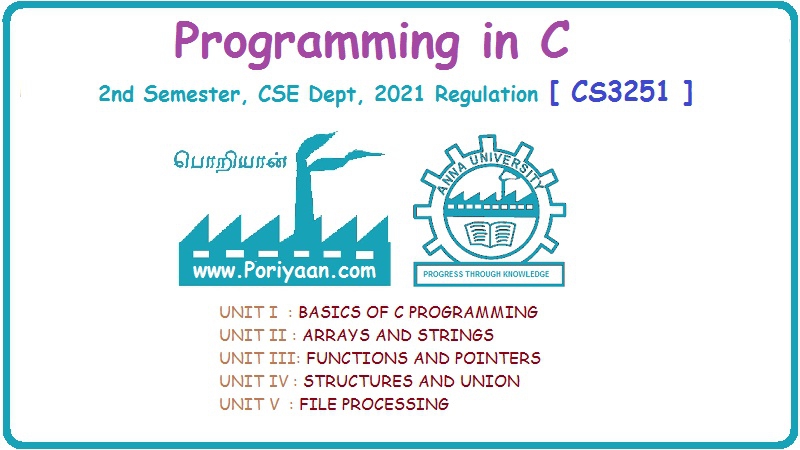Programming in C: Unit I (d): Preprocessor Directives
#line
with Example C Programs | Preprocessor Directives
The #line directive enables the users to control the line numbers within the code files as well as the file name that appears when an error takes place.
#LINE
Compile
the following C program:
#include <stdio.h>
main()
{
int a = 10:
printf("%d", a);
}
The
above program has a compile-time error because instead of a semicolon there is
a colon that ends the line, int a = 10.So
when you compile this program an error is generated during the compiling
process and the compiler will show an error message with references to the name
of the file where the error has happened and a line number. This makes easy to
detect the erroneous code and rectify it.
Programming Tip:
The filename in the #line directive must be enclosed in double quotes.
The
#line directive enables the users to
control the line numbers within the code files as well as the file name that
appears when an error takes place. The syntax of #line directive is
#line line number filename
Here, line_number is the new line number that
will be assigned to the next line of code. The line numbers of successive lines
will be increased one by one from this point onwards. The parameter Filename is an optional parameter that
redefines the file name that will appear in case an error occurs. The filename
must be enclosed within double quotes. If no filename is specified, then the
compiler will show the original file name. For example:
#include <stdio.h>
main()
{
#line 10 "Error.C"
int a=10:
#line 20
printf("%d, a);
}
This
code will generate an error that will be shown as error in file "Error.C", lines 10 and 20.
Please execute this program with the #line
directive and without the #line
directive to visualize the difference.
Hence,
we see that #line directive can be used to make the compiler provide more
meaningful error messages.
Note
A
preprocessor line control directive supplies line numbers for compiler
messages. It tells the preprocessor to change the compiler's internally stored
line number and filename to a given line number and filename.
Programming in C: Unit I (d): Preprocessor Directives : Tag: : with Example C Programs | Preprocessor Directives - #line
Related Topics
Related Subjects
Programming in C
CS3251 2nd Semester CSE Dept 2021 | Regulation | 2nd Semester CSE Dept 2021 Regulation
